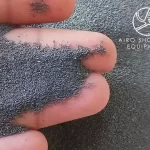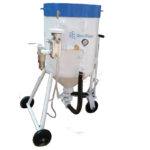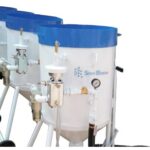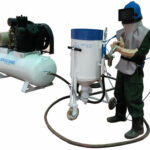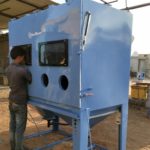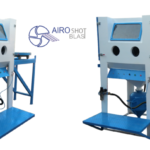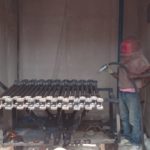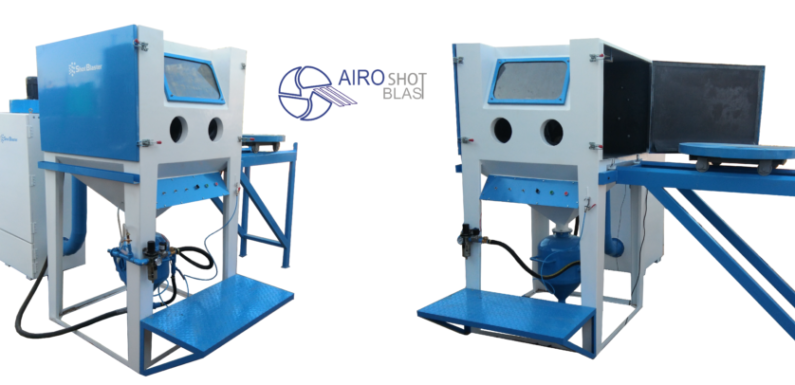
Sandblasting Cabinet
Sandblasting cabinet is another type of sandblasting machine which has a cabinet and is a closed or enclosed form of the machine. In that closed part blasting of contaminants as well as recycling of abrasive materials takes place. There are several other functions which are included like cleaning, recycling as well as the collection of dust materials too. In this sandblasting cabinet system, there is a window from where the operator can see what is going on in the process; there is an opening gate from where the blasting substance or blasting surface is put inside the Sandblasting cabinet.
Sandblasting Cabinet Specifications :
| Phase | Single Phase |
| Air Supply | 0.4-0.8 kg/M3 |
| Power supply | 220 V |
| Length | 700 mm |
| Width | 600 mm |
| Height | 600 mm |
The SSB200 large 220l sandblasting Cabinet helps to remove old paint, carbon deposits, surface rust, and other corrosion to give a bright new finish on metal components. High-velocity particles clean like no other agent. Revitalizes most automotive and mechanical parts. Especially effective in cleaning awkward recesses that are otherwise difficult to reach.
Features of Sandblasting Cabinet:
- Enclosed steel cabinet with side opening and protective clear view screen
- Double integral hand gloves for operative control and safety
- 12V internal light
- Uses aluminum oxide for steel – garnet powder for polishing aluminum
- Requires minimum 10cfm compressed air input at 3 – 5 bar
There are three types of sandblasting cabinet which can be arranged as follows:
1) Wet Blasting Cabinet
2) Pressure Blasting Cabinet
3) Suction Blasting Cabinet
Wet Blasting Cabinet –
The wet sand blasting cabinet or generally recognized as Wet Blasting Cabinetuses a seal-less slurry pump to convert the abrasive materials and water into a slurry mixture. This slurry mixture is then transferred or pumped directly to the abrasive blast gun where compressed air pressure moves the mixture with the desired pressure rating.
Advantages of wet abrasive blasting are as follows:
- The full-width window for the operator’s view, with a screen wiper and washing facility.
- Safe and single footswitch operation for the easy controlling of the machine.
- No dust is involved in the process.
- Reduce the risk of abrasive insertion.
- Fine abrasive media can be used as slurry is being formed.
- Easy maintenance because of quick-release pump design.
Pressure Blast Cabinet
Pressure Sand Blasting is work on the Direct Pressure principle of blasting. It utilizes a pressurized vessel or “blast container” that holds the abrasive materials. In a pressure blast cabinet, the air pressure in the vessel and in the “pusher” line is maintained to be the same. This means that there is no pressure differential within the blast container and the blast line this allows the abrasive media to meter into the airstream at the blast container and then move the blast pipe out to the nozzle. Pressure blasting cabinet abrasive equipment has a single hose running to the blast nozzle. A sandblaster dust collector is connected with a pressure blasting cabinet.
Suction Blasting Cabinet
When we are working with a suction-blast gun, it is easy to recognize, because it has two pipes also known as hoses attached to it, one providing compressed air and one vacuum pipe (abrasive blasting hose) is taking media into the gun. Pressure-blast nozzles have only one larger hose to deliver a mixture of media particles and compressed air.
